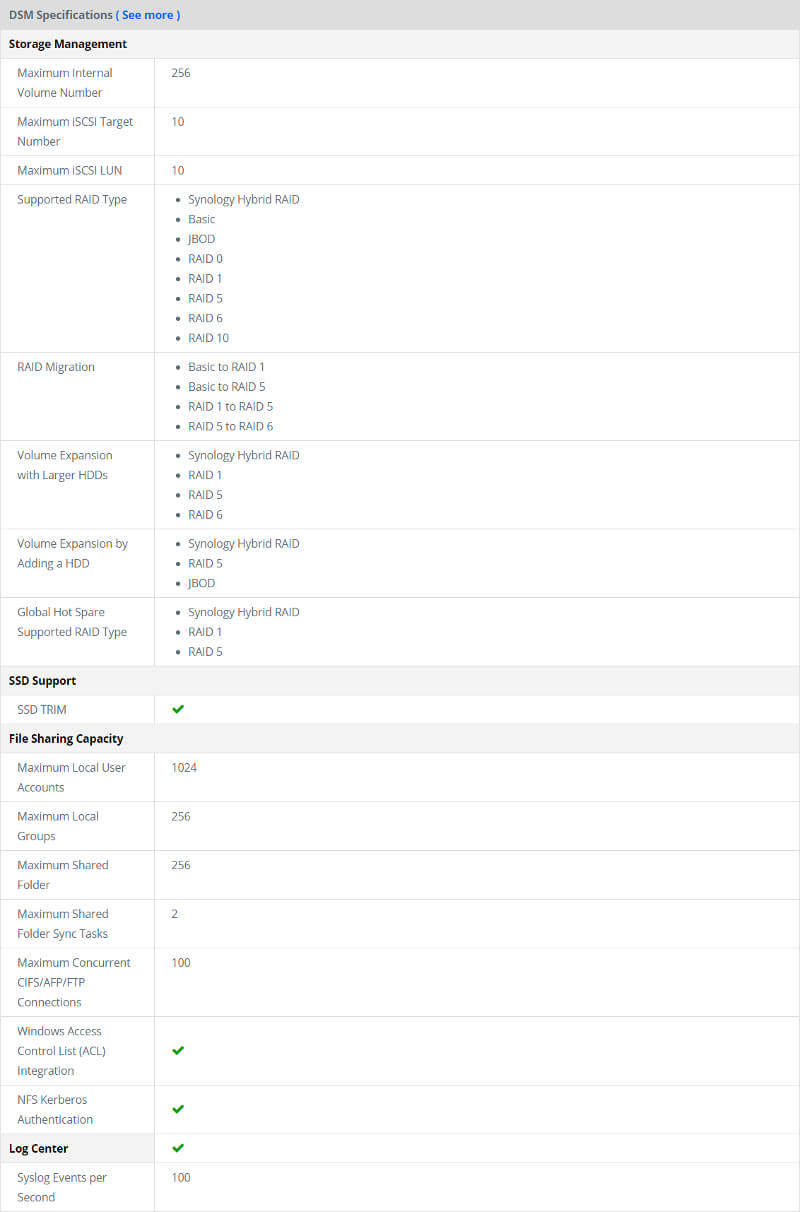Synology DS418j Budget-Friendly 4-Bay NAS Review
Bohs Hansen / 7 years ago
Introduction
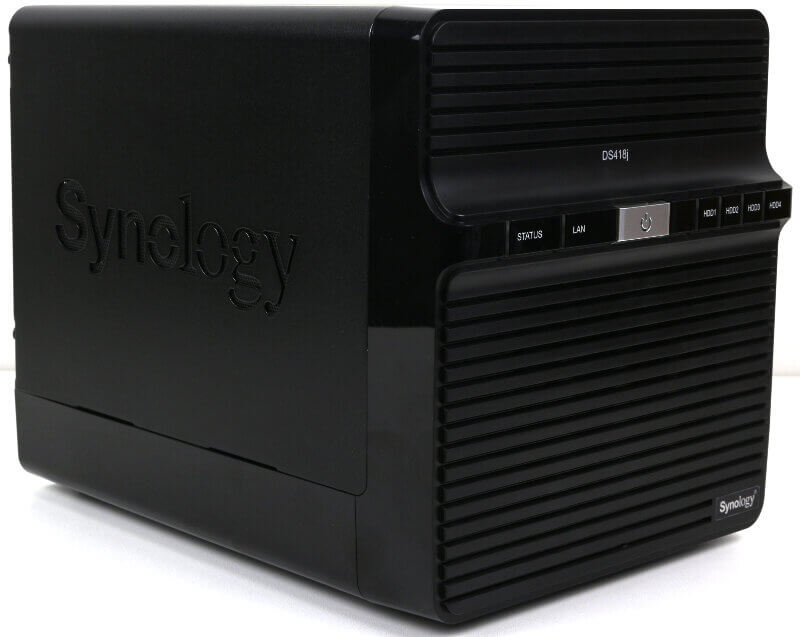
Synology’s DS418j is a budget friendly 4-bay NAS. Lately, we’ve had a look at a lot of 2-bay NAS units, and while that’s enough for a lot of people, it isn’t for all.
With 10TB drives, the DS418j offers you up to 40TB raw storage capacity. That’s a whole lot of storage space, and Synology allows you to use it in the best possible way. As with all Synology units, the DS418j uses the DSM operating system. It is both powerful and packed with features.
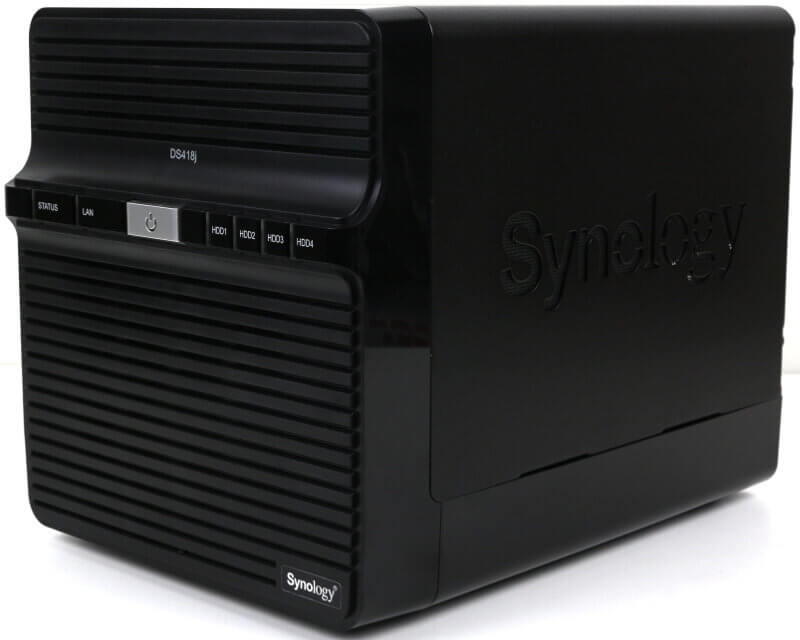
Designed for Budget-Oriented Users
Synology designed the DS418j to be a NAS for the budget-oriented user who also requires a lot of storage capacity. And let it be said right away, the word budget isn’t one which should scare you away. It’s just a way of getting only what you need and thereby only pay what’s necessary. Compared to the predecessor, the DS416j, we get a much better processor and double the memory. Both parts are of newer generations too, with the CPU now being a 64-bit processor and the memory now being DDR4.
The DS418j is a perfect device to set up your own personal cloud setup. Another good usage option would be for local and remote backup of PCs and mobile devices along with media streaming to almost any type of device. You can even connect network cameras and use it as the centre of a surveillance system. On top of that, there are nearly endless more possibilities through the installation of apps.
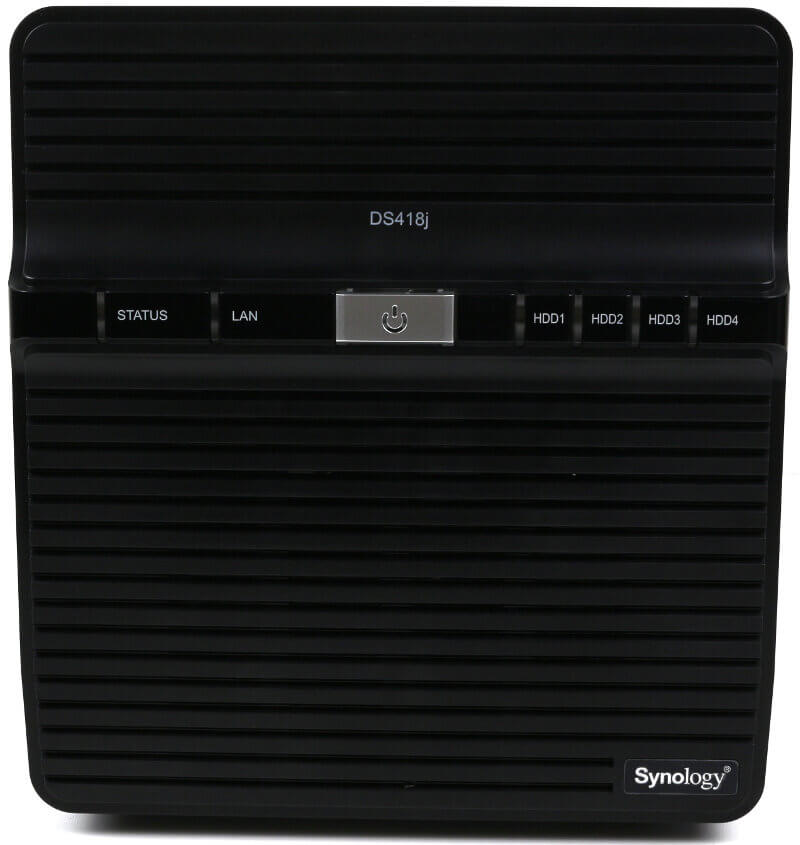
DS418j Hardware
To keep the costs down, Synology opted for a Realtek RTD1293 processor in the DS418j. While it is a fairly unknown processor for most, it isn’t one you should count out. The 64-bit processor has two cores (dual-core) and runs at 1.4GHz. Along with the new processor comes 1GB DDR4 onboard memory. That gives it enough power for ordinary tasks without using a lot of electricity. A budget system needs to stay budget. It isn’t enough that it just comes with a low asking price. The total-cost-of-ownership over the device’s lifetime is a significant factor. The DS418j will consume less than 22W when access and less than 9W when the installed drives are hibernating.
The processor also features hardware encryption, allowing the NAS to offer over 112MB/s read performance and over 87MB/s write performance with encrypted data.
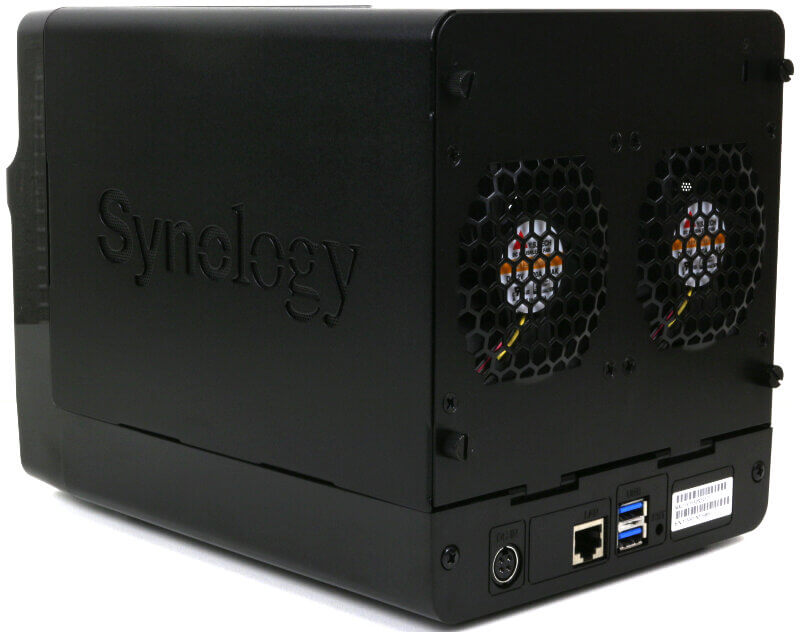
Connection Options
The DS418j takes a basic approach to the connection options, which is another way of keeping the price down. A lot of people won’t use more than this NAS offers, so in that regard, it’s perfect. You get a single RJ45 Gigabit Ethernet port for network connectivity and two USB 3.0 ports for storage devices, printers, or networking devices.
The four drive bays will take any normal SATA storage drive, whether it’s a high-capacity HDD or a faster SSD. DSM, the operating system in all Synology NAS, supports TRIM, making the use of SSDs effortless. You get all the available RAID modes for your drives with single, JBOD, RAID 0, RAID 1, RAID 5, RAID 6, and RAID 10. As a Synology device, you also have the option of an SHR (Synology Hybrid RAID) setup. SHR is an automated RAID management system allowing you to easily create and expand storage volumes and migrate RAID types without requiring details on RAID.
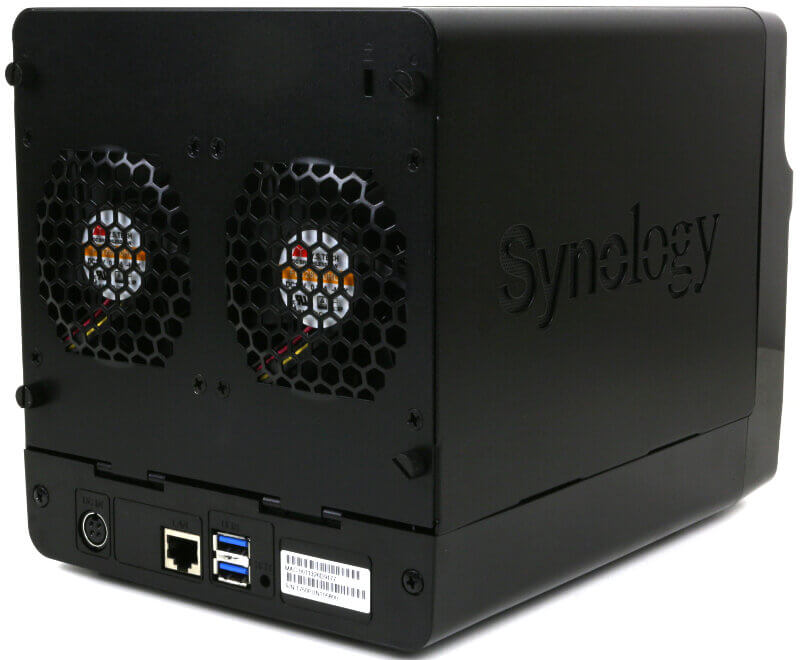
The Physical Design
Most NAS devices look the same, more or less. Each brand and model line has their small differences, but the basics remain the same. That’s a little bit different with Synology’s DS418j NAS. Where most NAS offer front-access for the drive bays, either with or without external drive trays, the DS418j does not. Instead, the NAS offers your rear access.
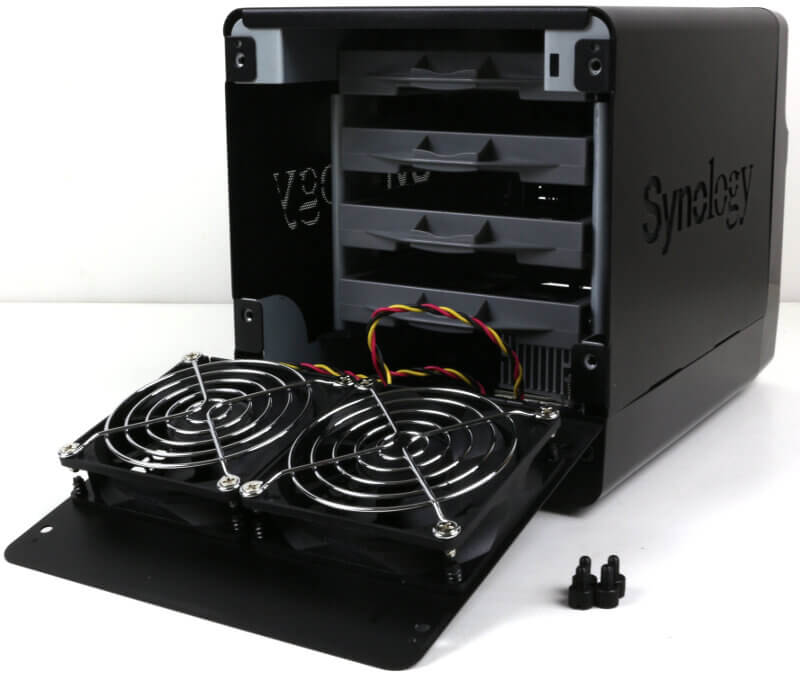
At first, this setup might seem a little weird, especially if it is the first time you have a NAS with rear access. What might seem weird at first does have some benefits. It isn’t more difficult to open and access the drives than any front-loading NAS without external drive trays, but you get easy access to the fans in this setup. A properly maintained and clean NAS will perform a lot better, and it’s also more silent. The DS418j makes that an easy task.
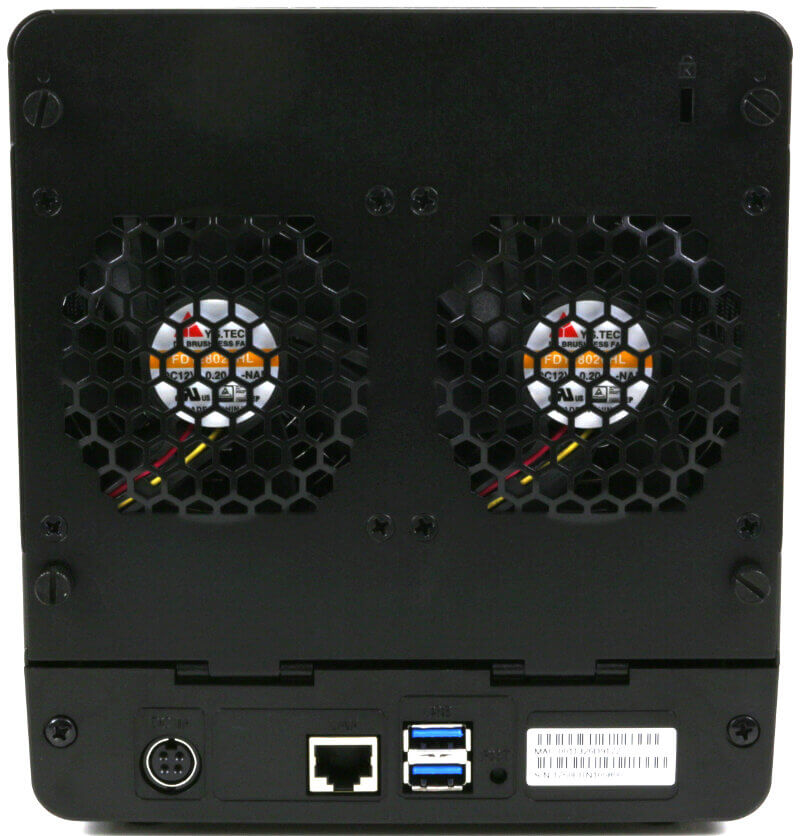
Feature Highlights
- Significant improvements over predecessor with better CPU and DDR4 memory
- Four drive bays for large storage needs
- Easy access to system fans
- Low price for an effective NAS
Specifications
The specifications are copied directly from the manufacturer at the time of the review.
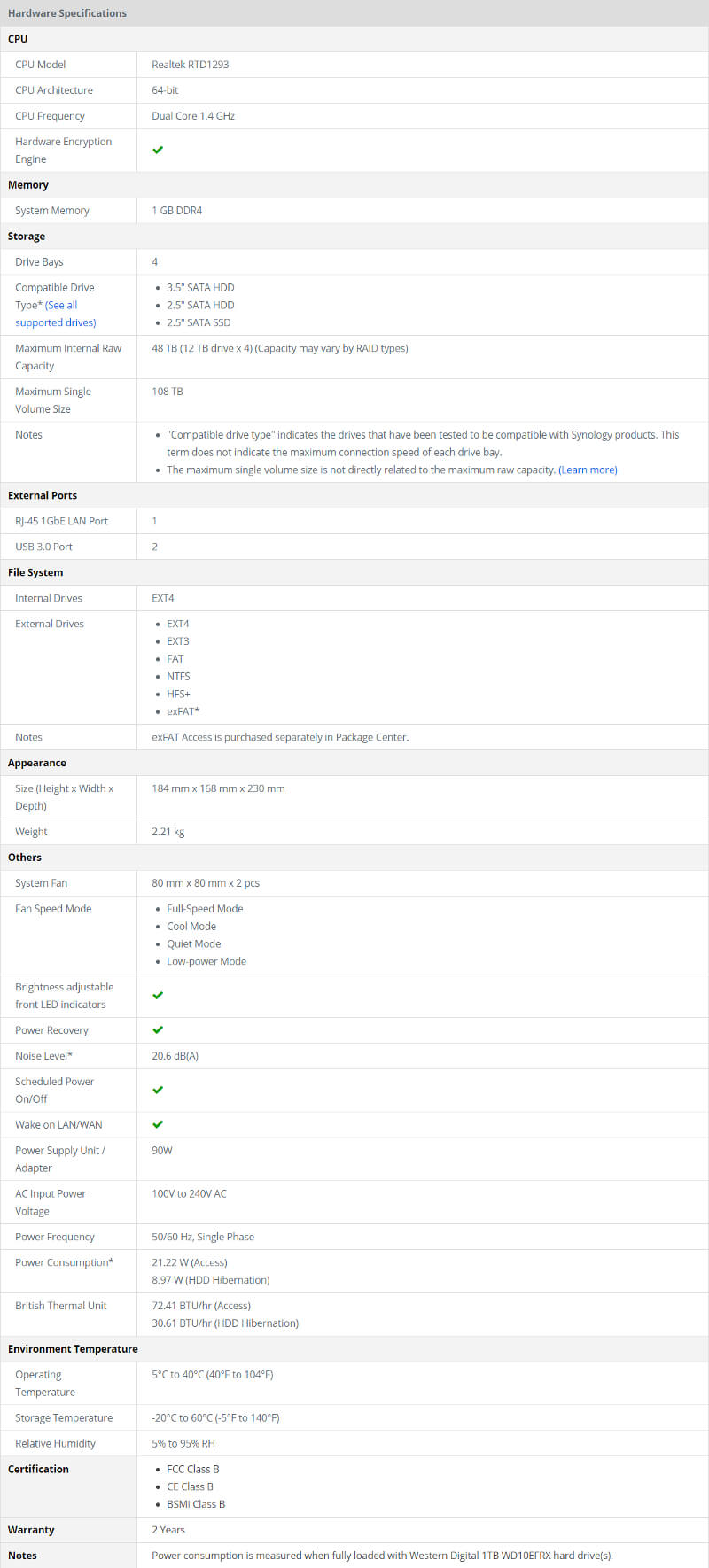
Software Features
